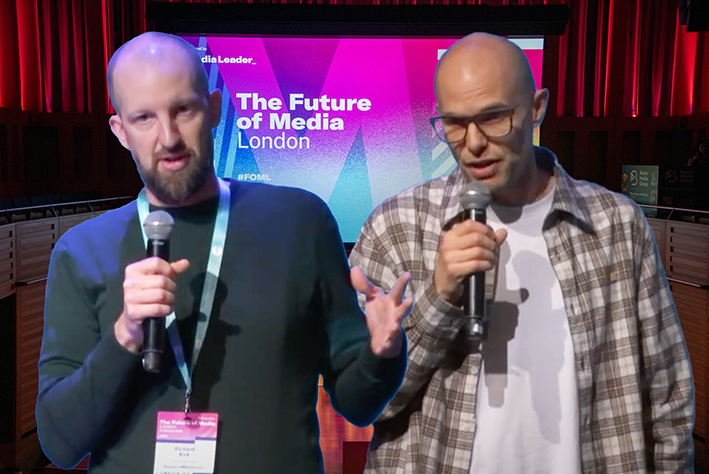The future of planning? A fresh look at value and consideration

The Future of Media London
Two strategy leaders shared what they believe to be the key focus for media planning at The Future of Media London in October.
For Richard Kirk, chief strategy officer at EssenceMediacom, it’s about “providing a unique view of media value”.
While reach, price and quality remain the three key aspects in planning according ot Kirk, innovation is tough in the first two as “fixed currencies”.
The future of planning will therefore be much more focused on quality, as in quality-adjusted reach as well as the relationship between quality and price. Kirk suggested: “This is where we can quickly deliver commercial advantage for brands.”
Citing Peter Field’s Cost of Dull project, Karen Nelson-Field’s research into attention and EssenceMediacom’s own work in signalling, Kirk said they all point in the same direction: “Nothing really beats unskippable, big-screen, shared viewing moments in media, ideally with the sound on.”
And this is the great shift that is happening: “The same platforms that disrupted media in that period of very low interest rates are now changing media by introducing significantly more advertising back into the landscape.”
For example, YouTube is encouraging more adspend towards “non-skippable 30-second inventory that’s screened on a connected TV as opposed to six-second skippable ads”, while Amazon Prime Video and Netflix have helped drive 20m UK households to ad-supported subscription plans.
Against a backdrop of huge fragmentation, the challenge is to “go back to the future”, Kirk suggested.
“Planning has to become refocused on understanding real value — the blend of reach, quality and price that’s on offer in these new and emerging high-quality formats,” he concluded.
‘Consideration’ key
Meanwhile, Simon Carr, chief strategy officer at Hearts & Science, suggested that planners need a better lens through which to look at “consideration”.
“We talk about performance a lot, but I think we overlook consideration to some degree,” he said, arguing the industry continues to rely on the sales funnel, which turned 100 this year.
One way to break down the notoriously slow-moving consideration metric is through category entry points, Carr proposed: “It allows us to be much more dynamic, much more context-specific.”
Beyond looking at a “static” understanding of consideration, category entry points offer planners a different view of the competition through the ability to measure their brand linkages.
Furthermore, category entry points bring context back into planning and they can even influence content design.
Most importantly, Carr argued this approach puts the consumer back at the centre: “How people enter a category, rather than ‘reasons to believe’, which we sometimes default to.”
Carr recommended planners first identify category entry points, then prioritise them: “You can start to map out the mental market share that you may have versus the rest of the category.”
But it’s at the activation stage that this thinking will “influence media planning at the hard end”. This could affect everything from messaging to behavioural design to how one deploys signals across the media plan. “Make sure you’re turning up in the right moment for the brand,” he pointed out.
This must be accompanied by tracking that goes beyond traditional brand-tracking, in order to see how brand linkages change over time.
Carr added: category entry points will be “super-interesting when we think about comms and media planning in the future”.
Brands could be spending three times too much on social. You read that right




